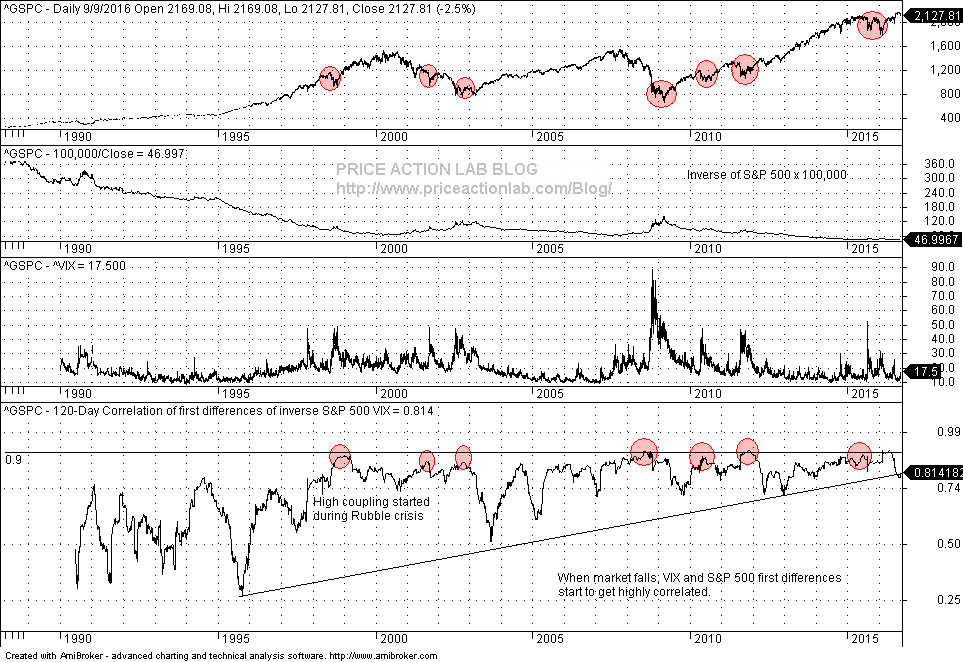I just about had it with all that VIX nonsense in the social media. VIX is an overrated indicator that reacts to price. Price is everything and VIX obeys price in a special way: When prices rise, VIX falls and when prices fall VIX rises. This is so trivial that one must try very hard to convince an audience that there is something more into it.
The chart below shows the 120-day correlation of first differences (X(t) – X(t-1)) of VIX and the inverse of S&P 500 price.
The relationship is clear: when S&P 500 falls, VIX rises and when the index rises, VIX falls. The tight coupling started near the Rubble crisis and has continued since with the lower bound of the correlation in an uptrend, as shown on the above chart.
I have written several articles in the past about this fact. Here is an example.
When someone says that VIX rose, I know immediately that the market fell and vice versa; the information about VIX is redundant. Pseudo intellectuals of Wall Street and market reporters with the false impression that they are doing technical analysis – when in fact they are doing literature – are not willing to accept that.
I just about had it with the myriads of posts about VIX in social media that mean nothing. Even more confused are some quants who try to take advantage of ill-conceived VIX-based products to develop strategies. My message: If one cannot deal with price itself, then chances are very low when dealing with an artificial, pseudo-intellectual construction like VIX that highly correlates to price, due to the additional noise. I feel sorry for those who do not understand this but by the time they realize it, it may be too late to recover.
Subscribe via RSS or Email, or follow us on Twitter.
Charting and backtesting program: Amibroker
Disclaimer
Technical and quantitative analysis of Dow-30 stocks and 30 popular ETFs is included in our Weekly Premium Report. Market signals for longer-term traders are offered by our premium Market Signals service.







